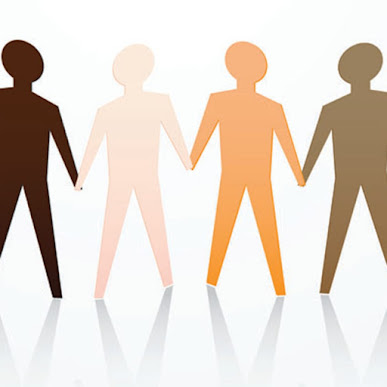RACE AND ETHNICITY
"Race" and
"ethnicity" are complex terms and often used interchangeably. These terms were initially separated to
designate “race” as a biological quality and “ethnicity” as a cultural
phenomenon. This distinction mirrors efforts to distinguish sex and gender.
Unlike “sex” and “gender,” however, there is little agreement on core distinctions
between race and ethnicity.
Race
The dictionary by Merriam-Webster
defines race as “a category of humankind that shares certain distinctive
physical traits.”1
Race is usually associated with
biology and linked with physical characteristics, such as hair texture or skin
colour and covers a relatively narrow range of options. Yet people of similar
complexions/hair textures can be defined as different races, and definitions in
the United States have changed over time.
While some may be considered to
be of a certain race, Black for example, people may identify more with their
individual ethnicity, as opposed to race. This could apply for any member
of any race.
When completing paperwork that
asks for the race, you may be asked to identify yourself as belonging to one or
more of the following categories:
- White
- Black or African American
- Asian
- American Indian or Alaska Native
- Native Hawaiian or Pacific Islander
Sometimes, you may be asked to
select just one category. At other times, you may be invited to check all the
categories that apply.
Ethnicity
Ethnicity is a broader term than
race. The term is used to categorize groups of people according to their
cultural expression and identification.
Commonalities such as racial, national, tribal, religious, linguistic, or cultural origin may be used to
describe someone’s ethnicity.
While someone may say their race
is “Black,” their ethnicity might be Italian, or someone may say their race is
"White," and their ethnicity is Irish.
Race vs. Ethnicity
Race and ethnicity can overlap.
For example, a Japanese-American would probably consider herself a member of
the Japanese or Asian race, but, if she doesn't engage in any practices or
customs of her ancestors, she might not identify with the ethnicity, instead
considering herself an American.
Another way to look at the
difference is to consider people who share the same ethnicity. Two people might
identify their ethnicity as American, yet one is a Black person and the other
is White. A person born of Asian descent growing up in Britain might identify
racially as Asian and ethnically as British.
When Italian, Irish, and Eastern
European immigrants began arriving in the United States, they weren't
considered part of the White race. This widely accepted view led to
restrictions of immigration policies and on the entrance of “non-White”
immigrants.
Around the start of the 20th
century, people from various regions were considered to be members of
sub-categories of the White race, such as “Alpine” and “Mediterranean” races.
These categories passed out of existence, and people from these groups began to
be accepted into the wider “White” race, though some retained distinction as
ethnic groups.
The idea of an ethnic group can
also be broadened or narrowed. While Italian-Americans are thought of as an
ethnic group in the United States, some Italians identify more with their
regional origins than their national ones. Rather than view themselves as
Italians, they consider themselves Sicilian. Nigerians who recently moved to
the U.S. might identify more with their specific group from within
Nigeria—Igbo, Yoruba, or
Fulani, for example—than their nationality. They might have completely
different customs from African Americans who descended from formerly enslaved
people and whose families have been in the U.S. for generations.
Some researchers believe that the
concepts of both race and ethnicity have been socially constructed because
their definitions change over time, based on public opinion. The belief that
race is due to genetic differences and biological morphologies gave way to
racism, the idea of superiority and inferiority based on race, they charge.
Persecution based on ethnicity, however, also has been common.
Finally..
Sociology uses and critiques the
concepts of race and ethnicity, connecting them to the idea of majority and
minority groups and social structures of inequality, power, and stratification.
“Race” refers to physical differences that groups and cultures consider
socially significant, while “ethnicity” refers to shared cultures, such as
language, ancestry, practices, and beliefs.





Comments
Post a Comment